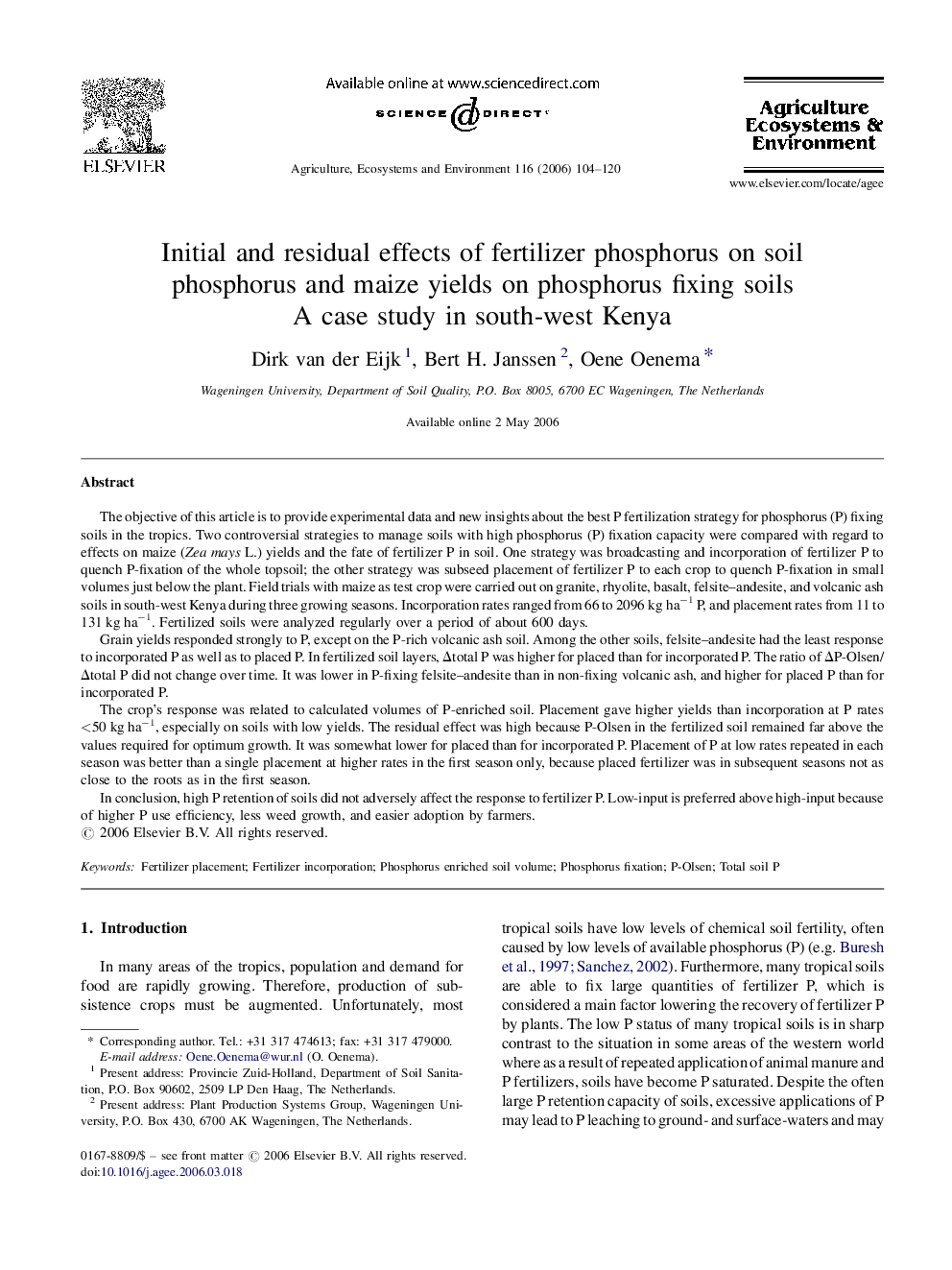| Article ID | Journal | Published Year | Pages | File Type |
|---|---|---|---|---|
| 2416011 | Agriculture, Ecosystems & Environment | 2006 | 17 Pages |
The objective of this article is to provide experimental data and new insights about the best P fertilization strategy for phosphorus (P) fixing soils in the tropics. Two controversial strategies to manage soils with high phosphorus (P) fixation capacity were compared with regard to effects on maize (Zea mays L.) yields and the fate of fertilizer P in soil. One strategy was broadcasting and incorporation of fertilizer P to quench P-fixation of the whole topsoil; the other strategy was subseed placement of fertilizer P to each crop to quench P-fixation in small volumes just below the plant. Field trials with maize as test crop were carried out on granite, rhyolite, basalt, felsite–andesite, and volcanic ash soils in south-west Kenya during three growing seasons. Incorporation rates ranged from 66 to 2096 kg ha−1 P, and placement rates from 11 to 131 kg ha−1. Fertilized soils were analyzed regularly over a period of about 600 days.Grain yields responded strongly to P, except on the P-rich volcanic ash soil. Among the other soils, felsite–andesite had the least response to incorporated P as well as to placed P. In fertilized soil layers, Δtotal P was higher for placed than for incorporated P. The ratio of ΔP-Olsen/Δtotal P did not change over time. It was lower in P-fixing felsite–andesite than in non-fixing volcanic ash, and higher for placed P than for incorporated P.The crop's response was related to calculated volumes of P-enriched soil. Placement gave higher yields than incorporation at P rates <50 kg ha−1, especially on soils with low yields. The residual effect was high because P-Olsen in the fertilized soil remained far above the values required for optimum growth. It was somewhat lower for placed than for incorporated P. Placement of P at low rates repeated in each season was better than a single placement at higher rates in the first season only, because placed fertilizer was in subsequent seasons not as close to the roots as in the first season.In conclusion, high P retention of soils did not adversely affect the response to fertilizer P. Low-input is preferred above high-input because of higher P use efficiency, less weed growth, and easier adoption by farmers.
